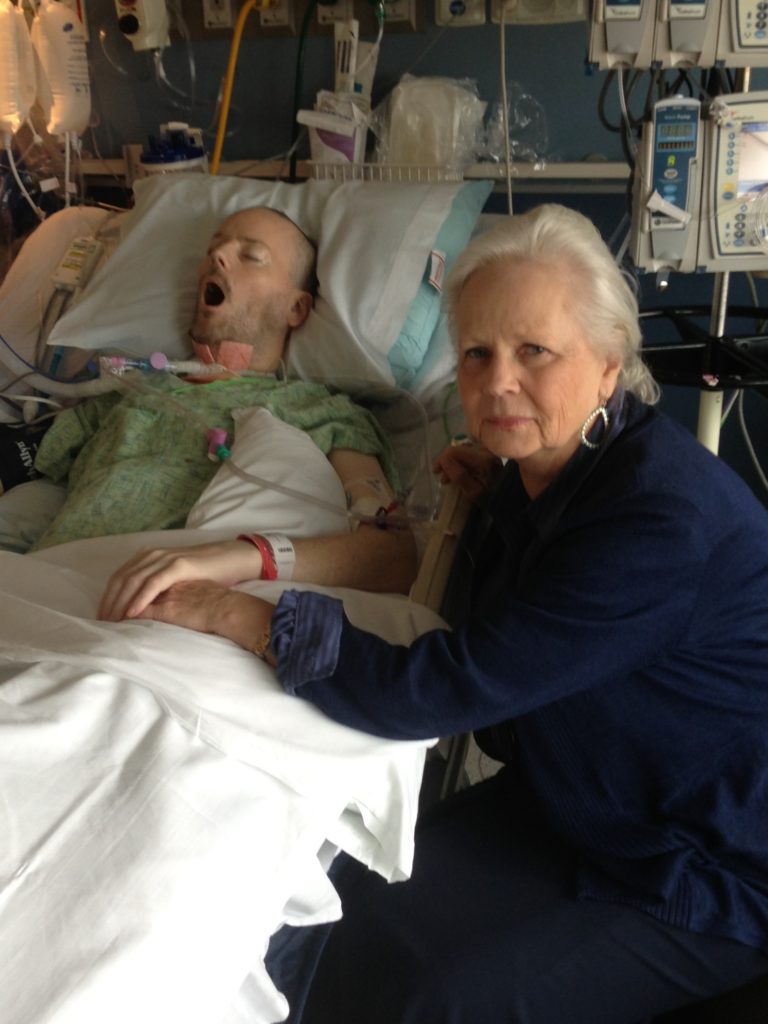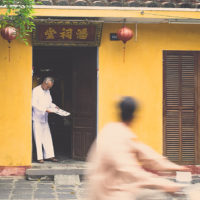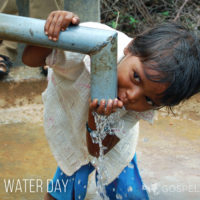
World Cancer Day 2018
By Karen Burton Mains
When our last-born child, Jeremy Mains, was younger, he used to complain regularly about the privileges of his older brothers and sister.
“Why don’t I get to do all the things Randy and Joel and Melissa get to do,” he would whine—frequently. My reply always was, “Just wait. Just wait. When they all grow up and leave home, you will be older, then you will be able to do all the things that they all do.”
Of course, that parental prophecy came true. When the older siblings were in college, or getting married, moving to their own homes and entering their first jobs, Jeremy was the only child left with us—a teen home alone, a high-schooler, then a college student, and finally a young adult, and he got to do a whole lot of the things he had always wanted to do.
Early, Jeremy exemplified a cross-cultural curiosity. At 16, he decided to study Japanese, arranged for a tutor, then nagged us to let him go to Japan through the contacts of a mutual friend for a whole summer living with Christian Japanese folk we had never met. Striking a bargaining advantage, he insisted that a several-month-language-and-cultural plunge was exactly what he needed. Missionaries to Japan, whom I went to for advice as this plan was forming in Jeremy’s mind, counseled, “If you don’t let him do it now, he might not want to go later.”
So we did; we sent him off across the ocean to a country we had never visited to stay with hospitable people we had never met. He came home a changed, more mature and much, much less picky eater than the teenager we had sent off early that summer.
After Jeremy returned from Japan, he began studying Spanish. Again, a close friend and missionary in Mexico agreed to arrange for him to live in Mexico for the whole next summer. And that is what our son did. He lived in a mountain village somewhere in the state of Puebla, helping to build shelter for a widow. Then he contracted the mumps, which added a personal health experience to another three-month-long language-and-culture plunge.
After graduating from college, Jeremy eventually went to China as an English language teacher with ELIC, the English Language Institute China, at the Petroleum Institute in Nanchong, Sichuan Province. He stayed there for two years, then came home and began working as an immigration counselor for World Relief, the International refugee organization. After he met (and then married) his wife, Angela Kinder (who had received a master’s in teaching English as a Second Language), the two soon headed back to Dalian, China, working at the Technological Institute as English language specialists. By this time, our son was fluent in Mandarin.
While in college, Jeremy suggested we meet at the Art Institute of Chicago to view an exhibit of ancient Japanese kimonos. This privately guided gallery tour gave me a hint that my son was a compulsively curious scholar, a lifelong learner; did he learn all this and retain from those years in Japan? He knew the kinds and ages of the kimonos without looking at the plaques on the wall.
It was here I learned about the Edo period between 1603 and 1868, which was under the rule of the Tokagawa shogunate, the last military feudal government. I also received an additional short, though unasked-for briefing, on the demise of the samurai.
Jeremy was the consummate teacher: Want to know about the confusing Serbian/Croatian conflict? Ask Jer. What and where is Herzegovina? What is comprehensive immigration reform? Ask Jer. If there was time, you would receive a lecture on the topic, and if you were lucky, it would be accompanied by charts. He had the capacity to understand it all.
In May 2013, David and I were attending the International Council meeting of field directors for Medical Ambassadors International, a faith-based world health organization. I was a board director and David often accompanied me, using his pastoral gifts to encourage and affirm.
We hadn’t been in California for more than a day and a half when Angela, our daughter-in-law, phoned to say that she had rushed Jeremy to the emergency room, where doctors had determined that, for some reason, his kidneys were failing.
He had seemed unusually tired that April, but I chalked it up to having multiple jobs and being an active father of three small children and sharing responsibilities with a working wife. Who wouldn’t be tired? Eventually, because of presenting symptoms of fatigue, stomach pain and swollen lymph nodes, he and Angela saw a general physician. The rest of us suspected mononucleosis. Why not? After all, one of his jobs was that of a language professor to students. Plenty of Epstein-Barr virus circulating around there.
However, when the general physician phoned Angela with an urgent message, saying the results of the blood work indicated Jeremy should be taken immediately to hospital, Jeremy had already been admitted, because his kidneys were shutting down, and he had a bowel blockage causing extreme pain. An early diagnosis indicated an acute form of a rare and aggressive lymphoma. Quickly, he was transferred to the oncology unit of Rush University Medical Center, a teaching and research hospital in downtown Chicago.
A dedicated team of oncologists at Rush University Medical Center in Chicago, headed by Dr. Parmeswaran Venugopal, designed a strong course in chemotherapy and radiation with the accompanying pharmaceutical regime. Our son was young and healthy (once the kidney failure had been reversed). Plus, he was determined to live.
He loved his life as an immigration specialist, a college professor, as well as a freelancer illustrating rather boring corporate programs. He loved his wife Angela, who was the director of Winfield Community Outreach, a faith-based community development service. He loved their three beautiful children: Eliana, 6; Nehemiah, 4; and baby Anelise, just 6 months old.
Because of all this, there was a slim chance that Jeremy might beat the odds. We heard the hopefulness of this, didn’t really calculate the weight of negative data, and activated our prayer chain, which included hundreds of friends in many countries around the world. We chose to believe in healing.
So the team of oncologists designed treatments, the goal of which were to bring the active cancer into remission, keep the toxicity manageable and find a bone-marrow-transplant donor (Jeremy’s oldest brother, Randall, was a perfect match).
Jeremy did go into remission, which Dr. Vengugopal described as a miracle. But the treatment was so toxic to his system that he had no capabilities to fight off the highly contagious, antibiotic-resistant staph infection that leads to potentially killer infections: MRSA, or in medical terminology, Methicillin-Resistant Staphylococcus Aureus.
As had been feared by his staff team, with no immune system to speak of, Jeremy succumbed to waves of illness. There was no opportunity for the blood-marrow transplant. Soon, because of the chemo toxicity, his mouth and face became paralyzed. He couldn’t eat and was fed through stomach tubes. His words were mumbled, and in truth, after the early chemotherapy treatments, for five months, at least to my viewpoint, there was not one day when he was better than the day before.
Looking back, I realize our son spent the last five months of his life going from debilitating physical crisis to demeaning physical incapability, longing to be home with his wife and three small children (and the two dogs)—on his own terms anyway, anyhow. This was not to be. There is no way to state this other than in stark terms: Our beautiful son, compassionate, eager and intellectual, died a gruesome death at the hands of cancer.
I remember thinking, One day we will look back on this medical approach, like we do now at the practice of bloodletting, and think, “How primitive.” A genius Creator would not have designed a body without the capacity to activate its own healing systems.
Indeed, the leading edge of cancer-cure discovery is the use of the body’s own T cells, which can seek and destroy cancer cells, extracted from the patient’s own blood. Then, in the laboratory, the T cells are genetically modified to produce chimeric antigen receptors, which are grown in large numbers known as hyper-cancer warriors. They’re then infused back into the patient where they latch onto unique proteins in cancer cells, destroying them rapidly and in a way that trains the body to keep on treating itself, perhaps for a lifetime. But first, the right human protein-coding gene must be matched to the correct cancer in order to trail what works where and how; there are 19,000 to 20,000 of these protein-coding genes.
CAR T-cell therapy, and its stunning possibilities, is too early in its evolution to know the vast possibilities it offers, or what its many downsides might be, or where and for which cancers it can be applied. Genetic engineering is at the dawn of its own promising (and potentially frightening) future, and our knowledge of the gene is galloping wildly into that future with scientific discoveries almost too rapid to absorb. Though I spent many nights on cots in many of Jeremy’s hospital rooms, monitoring the names of nurses and residents and fellows and aides, diverting attention from the constant tests and blood draws and the impossible difficulty of swallowing pills (this was even before his mouth became frozen, when kind nurses would crush all the tablets but the taste was so bitter he had difficulty), the opportunity to talk significantly was slipping away. Asking, “How do you want to die?” and have a serious discussion as recommended by Dr. Atul Gawande in his book Being Mortal was snatched from us.
As a result of the early chemo rounds when an Amoyo Reservoir was implanted in his skull to enable the toxic intrathecal brain drips, a bilateral droop developed, paralyzing a side of his face and his mouth. It was an excruciating exercise to catch what my son was attempting to say since the consonants b, d, f, m, n, p, v and w were unpronounceable. Often Jer would press his lips together with his fingers to make the puffing effort for any of these sounds.
Yet before the paralysis went rampant and during the first weeks of chemo treatment and hospitalization, Jeremy, the consummate teacher—and a gifted one at that, according to students from as wide an expanse as Sichuan Province in China to the small liberal arts Christian college in the Midwest—determined the long hours spent on my shift would be devoted to catching me up on my woeful ignorance of popular music, or as he teasingly defined it, “That would be the last 50 years of cultural music history.” My father, after all, was the Director of the Music Department of Moody Bible Institute—hardly a bastion of popular culture. I was raised in a home where the emphasis was church music.
Jeremy kept records by printing pertinent ideas in small black notebooks, wrapped with elastic bands. So with his determination not to waste the hospital hours, still lying in bed, and with me, a captive student at hand, spending hours, sometimes day and all-night shifts, he introduced me to The American Idiom 101. The black books came out, then the iPod. It didn’t take me long to realize I was being privately tutored in a course in ethnomusicology.
Initially, ethnomusicology was the study anthropologists made of non-Western music and the cultures and environments and customs that gave rise to them, but eventually, attention was turned toward Western music as well. In short, it has been described as the study of “people-making music.” That is exactly what this son opened up for me—he helped me to understand contemporary popular music as a means to identify with the people who had either made or were making it. It was not a matter of preference—what I liked or didn’t like—but a matter of understanding the cultural and class and national milieus that bred these songs to life.
Jeremy had many rooms on the oncology, hematology, critical-care and ICU floors. Through them all we watched the days turn to night, the seasons change from May’s high spring to October’s brilliant fall; we cheered the Blackhawks’ 2013 Stanley Cup win in the United Center just across the expressway. We took turns, doling out shifts to family and friends, making sure Jeremy was not alone in all those rooms on different floors in different wings of Rush University Hospital. So much to see, so much to talk about, so much to know, so much pain to absorb before that final day: November 5, 2013. Words, however, were no longer our métier.
Cancer shatters families. It lays waste to beautiful life. It does not discriminate between the good and the bad. (I personally felt there should be another kind of death lottery; one where only the evil and wicked and useless contact the disease.) The prayers of a thousand friends often do not eventuate the outcomes we seek. But I, 72 years old when our son died, never once shook my fist at God, nor did I question why. We have walked too many decades in this long faith direction to recant now. I concentrated, instead, on finding God in the hot cauldron of pain, in the numbing response to overloaded sensory systems, in refusing fear as we shuffled barefoot through the broken glass shards along the path that winds through the valley of the shadow of death.
Decades ago, when I asked a friend how she could bear the death of her beautiful daughter at age 24, she answered, “I decided that I would concentrate on giving thanks for the 24 years of life we had with her.” And so have I. And so have we. This holy harbinger given to me by a grieving mother stayed with me for 30 years. So too, we give thanks for every day of the cross-cultural journey with this son who was Jeremy Mains. (As have hundreds of immigrants, some of whom have gratefully told me, “He brought my whole family.”)
Phillip Yancey and his wife, Janet, have been friends for decades, but we haven’t seen them for years. Phil and I were in a writers’ group together. For most of his journalistic life, Yancey has focused on the problems of suffering and pain. Most of his books have been best-sellers, one of which was Disappointed With God. They were going to be in town. Would we have time to get together for dinner?
I realized after our wonderful evening of reconnecting that I hadn’t responded to their concerns about recovering from a son’s death in as succinct a way as I would have liked. So I wrote this letter, knowing it would force me to express myself better.
“The question I kept hearing in the back of my mind through the months of Jeremy’s dying was: Could I give up my son to One who had not refused to give His son to me? And so I gave this son up, sometimes every day of his dying, trusting in God’s perfect plan, be it life or death.
“The gift of that struggle, to submit to terrors unasked for, of bending the knee before crucifixions of surprising variety, of choosing to believe that God is in the midst of all the painful improbabilities, is the gift of love.
“A deep, deep attunement has come, to the world with its exquisite beauties and its terrifying sufferings. The results as the ancient writers often attested, the result is amor mundi: love for the world. As some saint once declared, ‘Hallelujah! All my gashes cry!’ I am being made alive with love in incomprehensible ways—love that suffers, love that rejoices, love that is there when I wake and work.
“This is a gift beyond my capabilities. It is the grace that can be given to those who pass through death here on this earth, yet live. Praise rises in my heart unaccountably—sweetness at the breathtaking beauty of it all, so fragile and so tenuous. A terrible tenderness swells in me beneath the watchful eye of a God I am humanly incapable of comprehending beyond my finite abilities. There are many things I do not know about this God I follow, but I do know He suffers for this broken and beautiful planet; and in some way, through the gift of this terrible tenderness, I have become a partner with Him in this suffering.”
Indeed, this suffering has made me one with all those who flee evil, with those facing the gun or the whip or the cage or the beheading sword. I, too, hold the broken body of the child some father carries, his mouth open with outrage before a photographer’s lens. I gasp at the little drowned body of a 3-year-old washed ashore on a beach—little refugee, little immigrant once carried in his mother’s arms.
Cancer has wantonly robbed us of one we treasure, his laughter, his voice on the phone, “Mom, it’s Jer.” And I thank God for the beauty of the 41 years of his life, and for the cultural plunge he took me on almost daily, and for the fact that from him I learned that all people are fascinating and not to be feared. Suffering has taught me to love—and to listen. I give thanks for this: A dying ethnomusicologist, this cross-cultural specialist, age 41, his mouth frozen closed by bi-polar paralysis (and eventually frozen open in death), nevertheless took his black notebook, his iPod and Pandora to introduce me to the voices of my culture, wailing and howling, defiant and demanding. I am hearing them, thanks to the hospital-room lessons and the consequent research since he has died, I am hearing them the way I believe God hears them—as human cries for the earth.
“And God so loved the world that He gave His only Son…” So I bow before the reality of amor mundi—always a pain-filled reality—and I grieve and enter into the pain. And I give thanks.

In the Critical Care Unit, as Jeremy was entering the last slumber before death, beyond the physical capacity of words, mouth open, a tracheotomy in his throat, tubes and monitors, physical depletion, the tortured remains of a body like the painting by Hans Holbein the Younger (Christ in the tomb), I held his hand and he squeezed my palm—one, two, three—one, two, three. I–love–you; I–love–you. That was the hand signal from all those hours seated in church pews. And that is the gift Jeremy Mains’ life and death—despite cancer’s victory—have left to me: love, this terrible tenderness. Amor mundi. Cancer’s victory is not such a great triumph after all.
Far off, distant, like a modern Bolero by Ravel, I can hear genetics inexorably advancing. Can you hear the march-step—fainter, then nearer, one day loud?
=====
For another blog on Patheos by Karen Burton Mains, go here.
For more blogs on Patheos by Gospel for Asia, go here.




